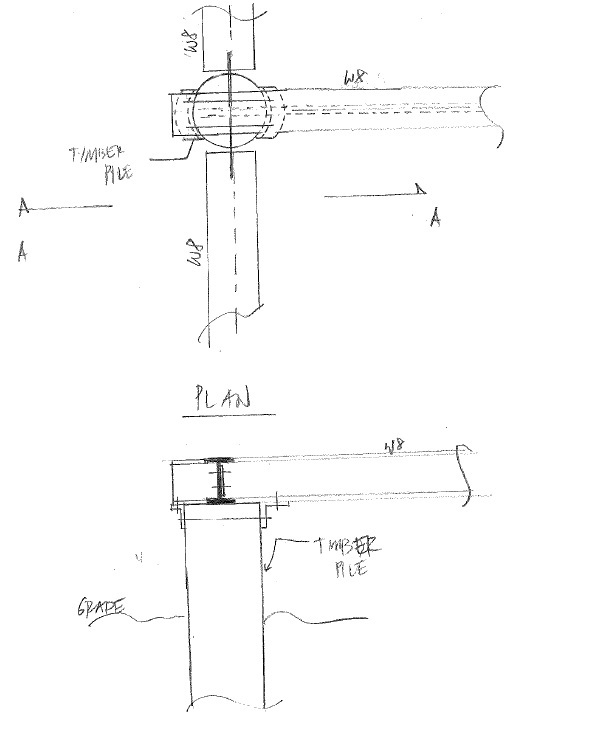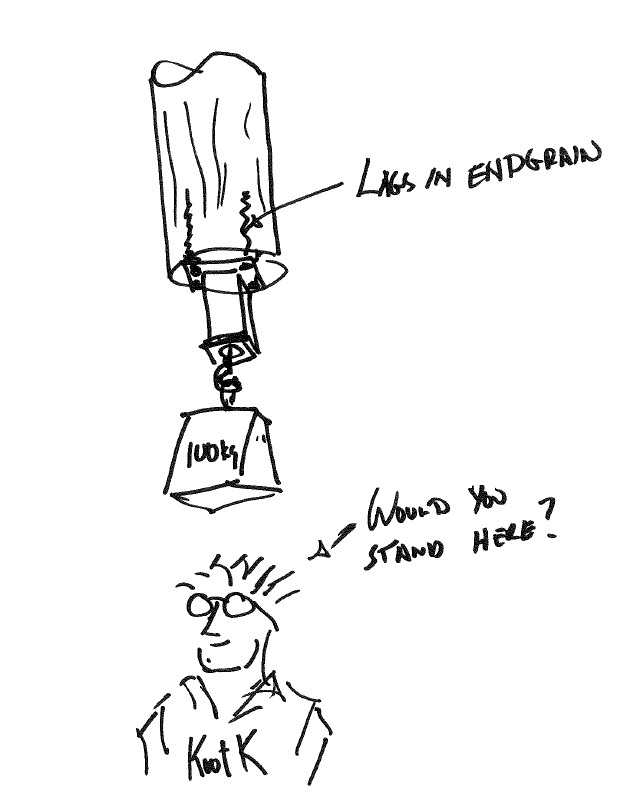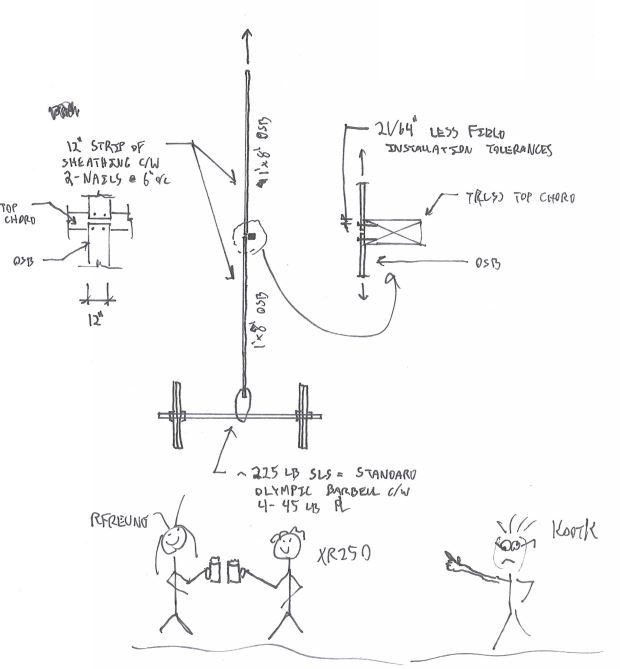delagina
Structural
- Sep 18, 2010
- 1,008
I can't figure out the best connection to do this.
if the timber pile was square, I could have used seat angle at the bottom of the beam.
but I prefer to use the more common round timber pile.
is there a round seat angle?
I could also install anchor bolts on top of the pile and bottom flange of the beam?

if the timber pile was square, I could have used seat angle at the bottom of the beam.
but I prefer to use the more common round timber pile.
is there a round seat angle?
I could also install anchor bolts on top of the pile and bottom flange of the beam?


![[glasses] [glasses] [glasses]](/data/assets/smilies/glasses.gif) ), there is no end grain issue--the lag screws go into the side grain of the pile. You do need to ensure the uppermost lag screw has adequate end distance to the top of the pile.
), there is no end grain issue--the lag screws go into the side grain of the pile. You do need to ensure the uppermost lag screw has adequate end distance to the top of the pile.
